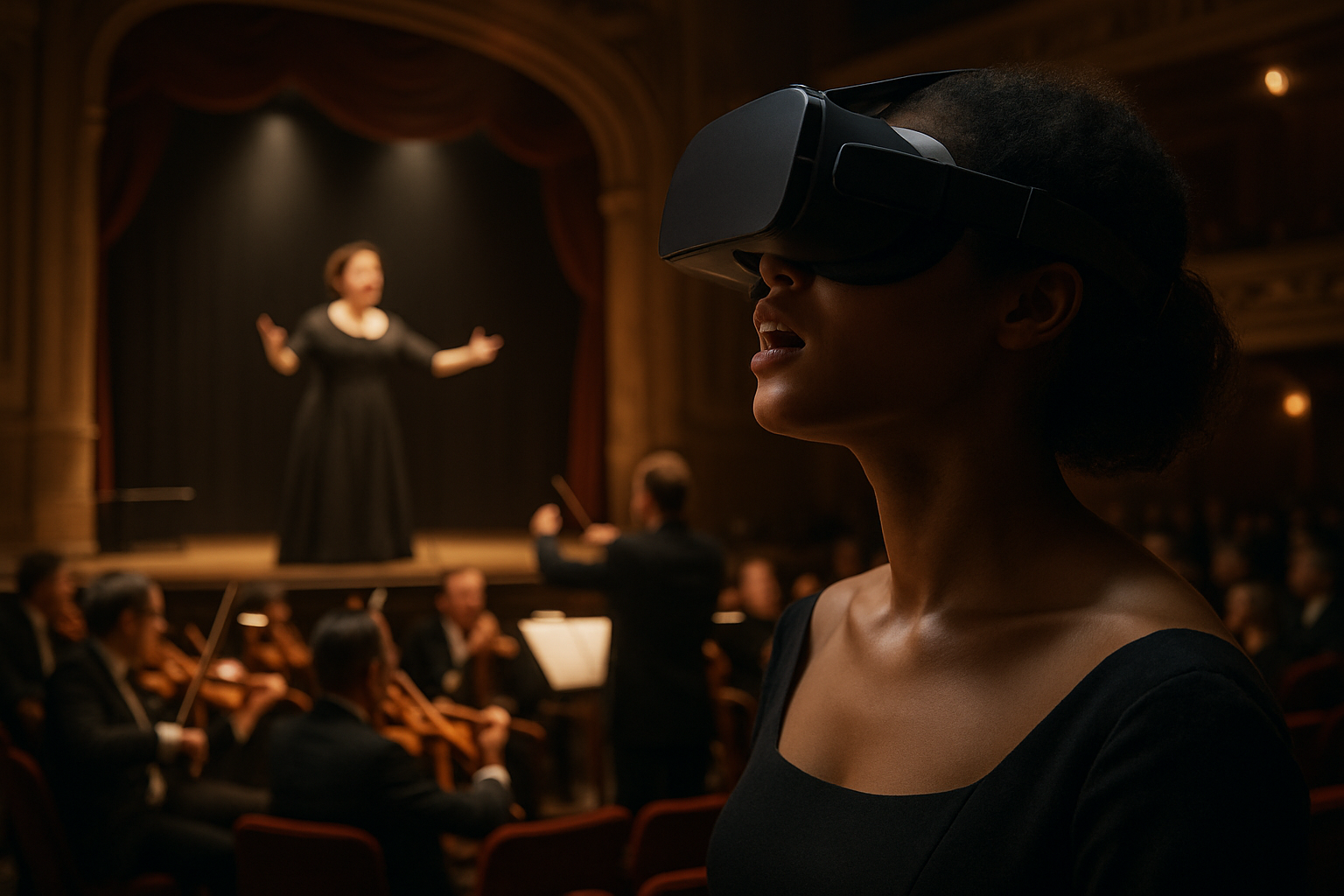Holographic Opera: A New Frontier in Musical Performance
In the ever-evolving landscape of artistic expression, a groundbreaking fusion of technology and classical art is captivating audiences worldwide. Holographic opera, a revolutionary concept that marries centuries-old musical traditions with cutting-edge visual technology, is redefining the boundaries of theatrical performance. This innovative approach to operatic presentation is not only attracting new generations of viewers but also challenging the very notion of what constitutes a live musical experience. As holographic opera gains momentum, it promises to reshape the future of musical theater and opera houses across the globe.

Technological Marvels Behind the Curtain
At the heart of holographic opera lies a complex system of lasers, mirrors, and high-resolution projectors. These components work in harmony to create three-dimensional images that appear to float in mid-air, interacting seamlessly with live performers on stage. The technology allows for the creation of ethereal sets, fantastical creatures, and even the resurrection of long-departed opera legends to perform alongside contemporary artists. Companies specializing in holographic entertainment have developed proprietary systems that can project images with unprecedented clarity and depth, ensuring that the visual spectacle matches the auditory brilliance of the opera.
Reimagining Classic Operas
Holographic technology has breathed new life into classic operas, allowing directors to reimagine beloved works in ways previously unimaginable. Productions of Wagner’s Ring Cycle have been transformed with holographic dragons soaring over the audience, while Mozart’s The Magic Flute has been enhanced with shimmering, translucent spirits that dance through the air. These visual enhancements not only dazzle the eye but also serve to deepen the emotional impact of the music and storytelling. By creating fully immersive environments, holographic opera transports viewers into the heart of the narrative, blurring the lines between reality and fantasy.
Creating New Operatic Experiences
While holographic technology has revitalized classic works, it has also paved the way for entirely new operatic creations. Composers and librettists are now writing pieces specifically designed to take advantage of holographic capabilities, incorporating visual elements as integral components of the storytelling process. These new works often explore themes of technology, virtual reality, and the nature of perception itself, reflecting the medium through which they are presented. Some productions have even experimented with interactive elements, allowing audience members to influence the holographic environments through movement or mobile devices, creating a truly participatory operatic experience.
The Global Impact of Holographic Opera
As news of successful holographic opera productions spreads, opera houses and theaters around the world are racing to adopt this technology. Major venues in New York, London, and Milan have already hosted holographic operas, with plans for permanent installations in the works. The technology has also opened up new possibilities for touring productions, as holographic sets can be easily transported and adapted to different spaces. This accessibility has the potential to bring opera to audiences in regions that previously lacked the infrastructure to host traditional large-scale productions, democratizing access to this art form.
Challenges and Controversies
Despite its growing popularity, holographic opera is not without its critics and challenges. Purists argue that the technology detracts from the raw power of the human voice and the intimacy of live performance. There are also concerns about the high costs associated with implementing holographic systems, which could potentially price out smaller opera companies and limit artistic diversity. Technical glitches during performances have occasionally marred productions, highlighting the need for further refinement of the technology. Additionally, questions about the ethics of digitally recreating deceased performers have sparked debates within the opera community and beyond.
The Future of Musical Performance
As holographic opera continues to evolve, its influence is beginning to extend beyond the operatic world. Other musical genres, from rock concerts to ballet, are exploring ways to incorporate holographic elements into their performances. The technology is also finding applications in music education, allowing students to interact with virtual representations of great composers and conductors. Looking ahead, the potential for holographic opera seems limitless, with possibilities ranging from fully virtual productions accessible from anywhere in the world to hybrid performances that seamlessly blend live and holographic elements in ways we have yet to imagine.





